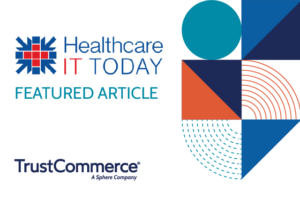According to the Consumer Protection Financial Bureau (CPFB) almost 1-in-5 households in the United States report having some form of overdue medical debt. The Kaiser Family Foundation (KFF) reports that 6% of American adults carry overdue medical debt over $1000, with an estimated total of $220 billion owed nationally. Rising healthcare costs and higher patient financial responsibility are starting to reveal a new social determinant of health—unaffordable medical bills. Substantial medical debt is most often seen in people with disabilities and/or chronic health conditions, low-income households, and uninsured Americans. However, even insured Americans can’t afford healthcare costs and are feeling the pinch.
Medical debt represents a major financial crisis for Americans, with around one-third of medical debt holders reporting a hit to their credit rating. KFF found that people who carry medical debt often postpone or even avoid necessary medical care so as not to accumulate additional debt. Those with significant medical debt may have to make major sacrifices in order to deal with their financial situation. A survey by The Commonwealth Fund (as reported in USA Today) found that 35% of Americans with medical debt responded that they had reduce their spending on necessities such as food and rent to pay medical bills, and 37% spent all of their savings in order to meet their medical financial obligations.
Taken together with spiking inflation and the current cost-of-living crisis, it is clear that healthcare consumers need some relief. Here’s what healthcare providers can do to help lessen the debt burden for patients and help the medical debt crisis.
Provide cost-of-care estimates
One of the reasons that paying for medical care in the U.S. is so challenging is the lack of price transparency in healthcare. Healthcare costs can vary wildly between different hospitals and healthcare organizations, and usually patients don’t know what they will have to pay until the bill comes. Providers can use a healthcare cost estimator tool to give patients clear, upfront estimates for services. When provided with cost-of-care estimates, patients and their families can shop around for the care that best fits their needs and budget. Estimates also allow patients to save up for elective procedures.
Offer flexible payment plans
Flexible payment plans allow patients to spread large medical bills over a longer period of time with manageable monthly payments. These plans lessen payment stress for the patient, but they are also highly beneficial to providers. Healthcare organizations that offer recurring payments and personalized payment plans speed up the payment process, leading to increased revenue, improved collections, and even better patient retention due to the trust built between patient and provider.
Hospitals and other healthcare providers might not be able to solve the medical debt crisis in American by themselves, but they can take steps to ease some of the financial burden on their patients. For providers who need a simple way to offer and manage these patient-friendly payment options, TrustCommerce offers comprehensive, integrated solutions. To learn more about our simple, safe, and secure payment options, contact a TrustCommerce sales team member.






